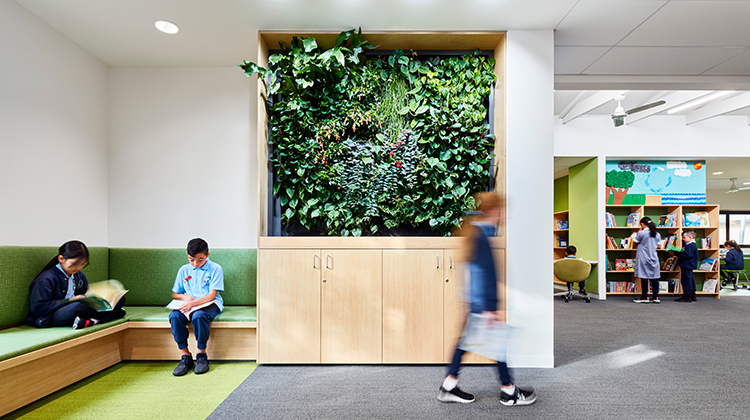Little Project With Big Heart Wins Regional Design Award

Small projects can open up enormous possibilities when schools and their designers commit to transformative change and make every dollar and square metre count. So it was with the new Discovery Centre at Dandenong South Primary School in Melbourne’s outer south-east, which was a big winner at the recent 2022 Learning environments Australasia Awards.
The project won the school the 2022 LEA Australasia Award for Best Small Project under $2M with the project’s modest budget of $1m raised by the school community, inspiring ClarkeHopkinsClarke Architects to go the extra mile with an engaging, hardworking design.
Principal Leonie Fitzgerald says students are relishing the new facility and embracing new STeM activities from “coding-related lunchtime programs to robotics lessons, posing their own experiments and investigations in chemical sciences, and engaging with digital simulations.”
The project reinvents an outdated, internalised library as an interactive, multipurpose environment combining a contemporary library and STeM centre. “It’s designed to foster students’ critical and design thinking, creativity, collaboration and problem solving skills through rich experiences with technology, engineering, mathematics, and science,” Leonie says.
“We believe that nurturing these skills in students from predominantly low socioeconomic backgrounds has a profound impact on future career pathways, especially in female students who may not be exposed to STeM education otherwise. Allowing our students to use the latest technologies to propose creative solutions is an exciting step, and we’re keen to see where this takes us.”
ClarkeHopkinsClarke education Partner Wayne Stephens concedes this was a departure from his team’s usual larger-scale, bigger-budget projects, but describes it as a great example of the huge impact small projects can have on students and communities. “This was such a satisfying project to be part of,” Wayne says. “That motivated our whole project team, led by Cassia Ward and Steve Green, to work hard to create an exciting hands-on space that delivers exceptional value for money. The builders, Alchemy Construct, did an outstanding job.”
”This is a government school in a disadvantaged area, which raised the funds for a project that suits them and works beautifully for them. That’s one reason I rate the LEA Awards so highly. They’re not about who spent the most money. They’re awarded for the design, how the space is used and what it achieves.”
The refurbished building contains zones for collaboration, group work and storytelling, a digital lab for online learning, a learning resources area, dedicated space to accommodate a full class, a quiet reflection nook, and a wet-area maker space that can function as a kitchen, art space or science station. It also hosts community events outside school hours.
Project Leader Steve Green says the design makes environmental awareness a visible component of the learning hub. “Adaptive reuse of an outdated building is a sustainable design approach, and we retained as many existing features as possible,” he says. “That includes beams, light fittings, ceiling fans and roof trusses, which we restored as a feature of the space.” The design also integrates a material palette of rich green accents expressed in paint, carpets and patterned vinyl. Plywood and laminate joinery and finishes are all specified for maximum durability and tactility.
The design promotes a strong connection to the natural world through abundant light and carefully framed connections to landscaping that features established trees. Internally, plants in the living green wall help filter air and create a calming sense of wellbeing. The storytelling space at the heart of the project features an inbuilt fireplace in a nod to campfire gatherings, creating a natural focal point where students intuitively gather and connect. There are also enclosed areas for private study and downtime, with acoustically treated rooms aiding noise management.
Leonie says the designers were “tireless in examining, challenging and extending our ideas”. The result is a project that came in under budget and surpassed expectations. “Our school community is in awe of the design,” she says. “It motivates students to apply digital and design thinking in their everyday learning. The vertical green wall and connectivity to outdoor areas is proving to be excellent for enhancing student engagement and wellbeing, and it complements our scientific learning about plants and biodiversity.”
Image by Rhiannon Slatter